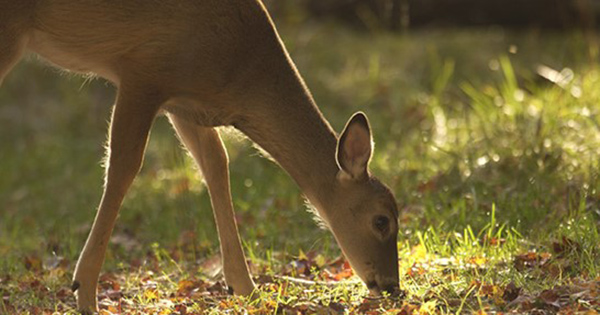MDNR Report
 Now is the Time to Improve Habitat for the Deer
Now is the Time to Improve Habitat for the Deer
Spring is a great time to start preparing your area for deer habitat. You may be considering ways to make your property more attractive to deer or might be thinking about what to plant in your food plot. Here are some tips and considerations as you are making habitat improvement plans this year.
Getting started
Deer do best in areas with young forests and brush, where they eat buds, branches, fresh grass and green leaves that are close to the ground. If the forest on your property is too old, it can be managed by logging or developing forest openings. You can also manage fields, croplands and marshes by planting grasses, trees, shrubs and food plots. When you're managing your land, remember the habitat needs of deer vary by season.
One place to start is evaluating the existing habitat elements and cover types that are already on your property. After you've assessed your property, you can start thinking about what you want to change or improve.
Providing food sources
With the recent ban on baiting and feeding of deer, in order to help slow the spread of chronic wasting disease in the Lower Peninsula, we want to provide some alternatives for those who hope to have hunting success this fall. The suggestions offered mimic what deer already can find in nature and is a healthier alternative to baiting and feeding, which can cause unnatural congregation of deer.
- In the spring, early-greening grasses and legumes are essential food sources. Examples include Canada wild-rye, June grass, orchard grass, blue grass, timothy grass, red clover, alsike clover and ladino clover.
- In the summer, when food is more abundant, the leaves of certain trees and shrubs, grasses and agricultural crops make good forage. Aspen, red maple, white ash, blackberries, dogwoods, sassafras, wheat, oats, corn, soybeans, buckwheat, clover and alfalfa are some examples.
- For fall forage, deer need to be able to build up fat reserves as winter approaches. Oak acorns, beech nuts, crabapples, maple and dogwood leaves, willow, brambles, corn, soybeans, apples, and wheat are examples of fall food sources.
In the wintertime, when deer move less, they need to be able to find food within a quarter-mile of cover. They eat woody browse, branches and buds, all of which need to be within reach. Examples of food sources include white pine, red maple, white cedar, yellow birch, dogwood, viburnum, sumac and aspen.
Improving habitat
Forest management: Good forest and woodlot management practices are essential to providing food and cover for deer. Depending on the species of trees you're managing, your techniques may differ. For instance, for aspen management, we generally remove 1 to 10 acres of trees on a rotating basis, so the overall stand has a chance to regenerate every 40 years. In contrast, for oak management, we remove 20-50% of the canopy every 10-20 years to encourage consistent nut production. Managing your forest or woodlot may require the assistance of a professional forester.
Grassland management: Grasslands are an important source of food and cover, including bedding and fawning cover. To manage your grasslands, maintain irregularly shaped openings through mowing or burning. Plant travel corridors of trees, shrubs or grasses for food and cover, and early-growing grasses for spring food near woods, fence rows, wetlands and brushy areas.
Food plots: Planting annual or perennial food plots can provide a good source of supplementary nutrition and, depending on what you plant, may also serve as cover. Food plots are an agricultural practice, so managing a food plot will likely include management activities such as testing your soil, cleaning your seedbed, applying fertilizer and removing weeds.
Remember, in the Lower Peninsula, baiting and feeding deer and elk is banned; this ban, however, does not include planting and creating food plots. If you're looking for a way to attract deer to your property for hunting or viewing this fall, you may consider a food plot.




